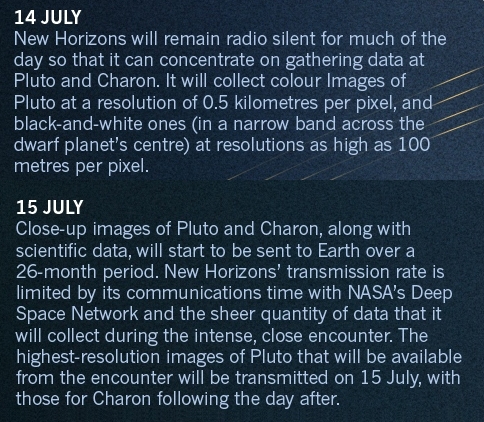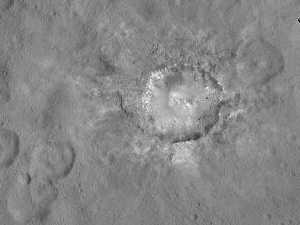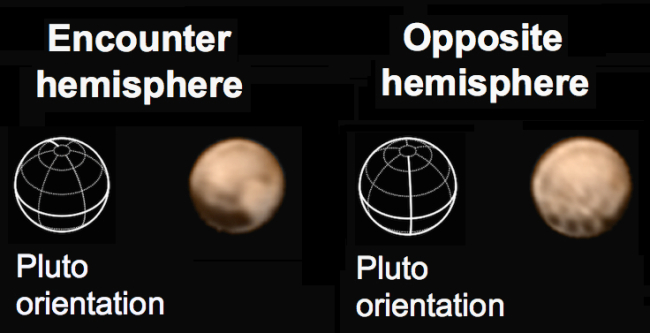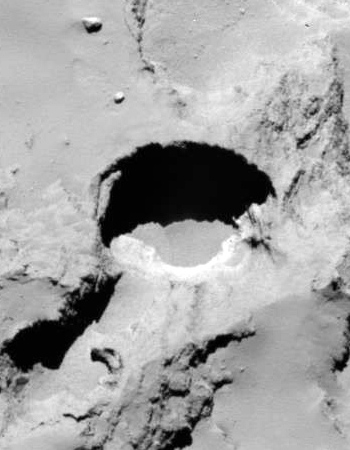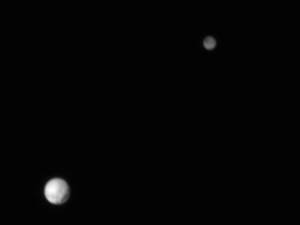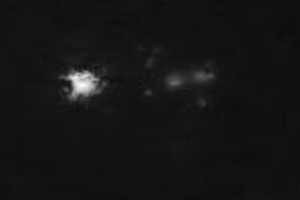A New Horizons map of Pluto
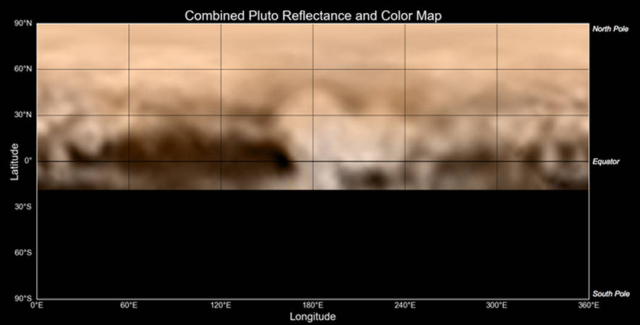
Cool image time! The New Horizons science team today released their best global map of Pluto, as seen so far.
The center of the map shows the area that New Horizons will see close-up during the fly-by.
The elongated dark area informally known as “the whale,” along the equator on the left side of the map, is one of the darkest regions visible to New Horizons. It measures some 1,860 miles (3,000 kilometers) in length. Directly to the right of the whale’s “snout” is the brightest region visible on the planet, which is roughly 990 miles (1,600 kilometers) across. This may be a region where relatively fresh deposits of frost—perhaps including frozen methane, nitrogen and/or carbon monoxide—form a bright coating.
Continuing to the right, along the equator, we see the four mysterious dark spots that have so intrigued the world, each of which is hundreds of miles across. Meanwhile, the whale’s “tail,” at the left end of the dark feature, cradles a bright donut-shaped feature about 200 miles (350 kilometers) across. At first glance it resembles circular features seen elsewhere in the solar system, from impact craters to volcanoes. But scientists are holding off on making any interpretation of this and other features on Pluto until more detailed images are in hand.
Some of these features will not be resolved much clearer than this, as Pluto’s day is six Earth days long, and will thus not be visible any longer to the spacecraft during its last week approach. In addition, much of the southern hemisphere will also not be imaged at all, as the planet’s inclination puts much of that hemisphere out of view entirely.
Nonetheless, we will see a great deal that has never been seen before. Stay tuned!

Cool image time! The New Horizons science team today released their best global map of Pluto, as seen so far.
The center of the map shows the area that New Horizons will see close-up during the fly-by.
The elongated dark area informally known as “the whale,” along the equator on the left side of the map, is one of the darkest regions visible to New Horizons. It measures some 1,860 miles (3,000 kilometers) in length. Directly to the right of the whale’s “snout” is the brightest region visible on the planet, which is roughly 990 miles (1,600 kilometers) across. This may be a region where relatively fresh deposits of frost—perhaps including frozen methane, nitrogen and/or carbon monoxide—form a bright coating.
Continuing to the right, along the equator, we see the four mysterious dark spots that have so intrigued the world, each of which is hundreds of miles across. Meanwhile, the whale’s “tail,” at the left end of the dark feature, cradles a bright donut-shaped feature about 200 miles (350 kilometers) across. At first glance it resembles circular features seen elsewhere in the solar system, from impact craters to volcanoes. But scientists are holding off on making any interpretation of this and other features on Pluto until more detailed images are in hand.
Some of these features will not be resolved much clearer than this, as Pluto’s day is six Earth days long, and will thus not be visible any longer to the spacecraft during its last week approach. In addition, much of the southern hemisphere will also not be imaged at all, as the planet’s inclination puts much of that hemisphere out of view entirely.
Nonetheless, we will see a great deal that has never been seen before. Stay tuned!

